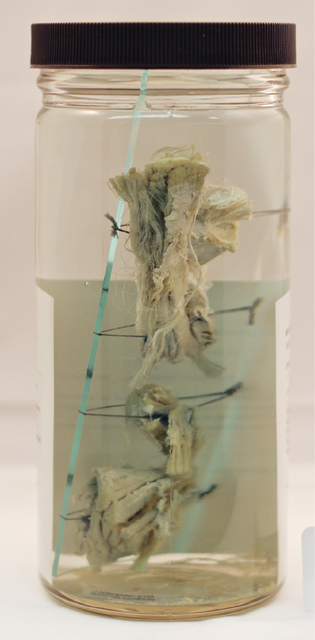When members of the Explorers Club gathered for their lavish annual dinner in New York City in 1951, one account said they feasted on meat from a prehistoric wooly mammoth that had been preserved in a glacier. ADVERTISING When members
When members of the Explorers Club gathered for their lavish annual dinner in New York City in 1951, one account said they feasted on meat from a prehistoric wooly mammoth that had been preserved in a glacier.
The banquet menu said the long-extinct mystery meat was actually giant sloth.
But Yale researchers using DNA analysis on surviving bits of the meat have now reached what could be the final word on the story: Neither is true.
The meat that was served was nothing more than modern-day sea turtle.
“I’m sure people wanted to believe it. They had no idea that many years later, a PhD student would come along and figure this out with DNA sequencing techniques,” said Jessica Glass, a Yale graduate student and co-lead author of a study published Wednesday in the journal PLOS ONE.
The Explorers Club gala, held in the grand ballroom of the Roosevelt Hotel, promised a menu of Pacific spider crabs, green turtle soup, bison steaks and meat from an extinct giant ground sloth, according to Adalgisa Caccone, a senior research scientist and study co-author.
Some of the folklore about mammoth being on the menu apparently grew out of a Christian Science Monitor story that ran days after the January 1951 event. It reported the “chief attraction at the smorgasbord was a morsel of 250,000-year-old hairy mammoth meat.”
It apparently had been found at “Woolly Cove” on Akutan Island, in the Aleutians, and was shipped to New York. According to Yale, the banquet’s promoter, Commander Wendell Phillips Dodge sent out press notices saying the annual dinner would feature “prehistoric meat.”
An Explorers Club member, Paul Griswold Howes of the Bruce Museum in Greenwich, Connecticut, was unable to attend the dinner but requested a piece of the meat be sent to him.
The specimen remained at the Bruce Museum until 2001, when it became part of the mammal collection at the Yale Peabody Museum in New Haven, Connecticut.



